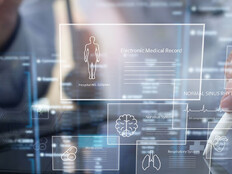One country, a couple of days apart. It’s just a reminder that when you build policy at the federal level, you have to really be conscious of differences in order to help raise the floor across the board without hindering progress.
HEALTHTECH: What does interoperability in healthcare mean to you, and where do you think the industry is in terms of progress?
DESALVO: Our appreciation of what it means to be connected in general has evolved in the past decade. The way that I think we feel it palpably is when there’s actionable information that is available in a timely fashion, not just to doctors and other clinicians, but increasingly to the consumer.
The frustration we all feel is that despite data exchange improvements, we still just get a portion of the available information and, thus, an incomplete picture of someone’s health. It also isn’t easy to aggregate data yet. So even if there’s a point-to-point connection that works — and most of the healthcare systems by and large have some kind of point-to-point connection in their regions now — it’s difficult to integrate that data into an existing system.
HEALTHTECH: How can things improve?
DESALVO: It’s not the interoperability of the point-to-point connections, but really being able to seek and find information. Techniques like blockchain are important because they enable providers to grab verified data as necessary.
Technology is quickly evolving. Depending on your use case, you’ll have a different definition of interoperability. I’m a big fan of consumer-mediated exchange, which is an Apple-type approach, and advocate that we ought to think about a world in which there’s a longitudinal health record for every person; all together, that becomes a community’s record.
MORE FROM HEALTHTECH: Aneesh Chopra touts common data standards as the cure for interoperability!
HEALTHTECH: What is the focus of your work at Dell Medical School?
DESALVO: It includes strategic efforts to build new care models and community efforts that emphasize social determinants of health. I’ve also co-convened an alliance with former Department of Health and Human Services Secretary Mike Leavitt, focused on that same goal. The country’s on fire about the opportunity to bend healthcare trends by understanding and addressing social determinants.
HEALTHTECH: How can organizations better leverage technology to further these efforts?
DESALVO: Providers currently use data and technology to identify who’s at risk for having an unmet social need. Companies like LexisNexis can scrape together available data and create a social risk score for a person based upon where he or she lives. That allows a provider to ask more targeted questions about actual needs for individuals. We’re also seeing a movement toward digital companies getting into the business of social services. Think about ride sharing as an example, or some of the food delivery services.
HEALTHTECH: How has all of this impacted the way doctors are trained?
DESALVO: There’s more transparency in the system, though it’s not where it ought to be yet. The way I trained, it was a very different power structure.
There were paper charts that only doctors saw, and patients really got only a little bit of information; they periodically were allowed to peer in. Now, in some settings that have implemented OpenNotes, patients can look at their records and contribute to the conversation. The more knowledge our patients have, the more engaged and empowered they become. Students today are more comfortable with that because they’ve grown up in a Big Data universe.











